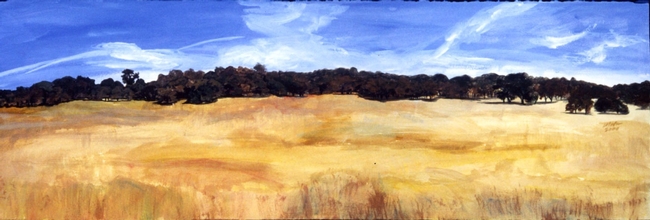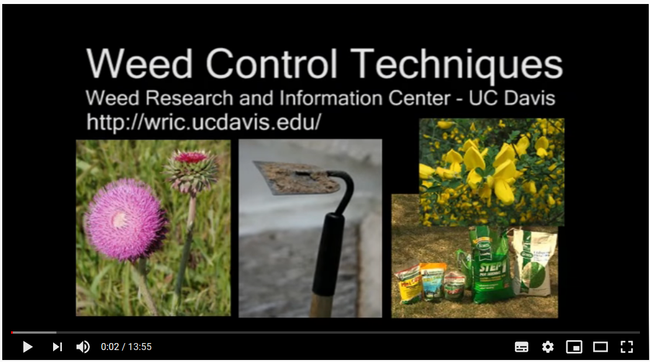- Author: Ben Faber
Join us on alternate Tuesdays in May and June, 3:00 pm to 4:00 pm, for this opportunity designed for middle and high school students. Treemendous Tuesdays is a collaboration of U.S. Forest Service, Los Angeles Center for Urban Natural Resources, California Project Learning Tree, California 4-H, and University of California Agriculture and Natural Resources.
Five webinars will be hosted every other week starting May 5 and ending June 30. These events are free and registration is required. Flyer is attached. Dates, topics, and link to registration are below.
Please share this online opportunity with organizations, community members, teachers, parents, and students. We look forward to giving students a glimpse of the wonders and benefits that trees offer!
- May 5: Invasive Species (invasive shot hole borers)
- May 19: Invasive Plants & Trees
- June 2: Benefits of the Urban Forest
- June 16: iTree
- June 30: Living with Fire
Register at https://ucanr.edu/survey/survey.cfm?surveynumber=29846
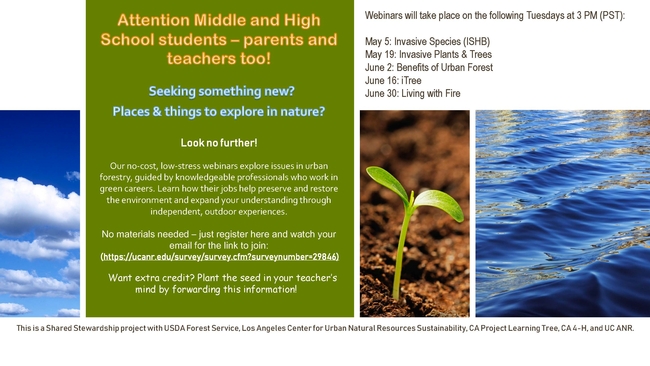
- Author: Ben Faber
Citrus greening disease, also called huanglongbing (HLB), is a bacterial infection of citrus trees that results in small, misshapen and sour fruits that are unsuitable for consumption. The disease ultimately kills the tree.
Because there is no cure, HLB is a major threat to the $10 billion citrus industry in Florida, where it was first detected in 2005,and to the $7 billion industry in California, where it appeared last year.
Researchers from the Boyce Thompson Institute (BTI), the U.S. Department of Agriculture Agricultural Research Service (USDA-ARS) and the University of Washington investigated a seemingly unlikely source of biocontrols for HLB: neuropeptides found in Asian citrus psyllids, the insect that carries the disease-causing bacterium Candidatus Liberibacter asiaticus (CLas), which it spreads while feeding on a tree's leaves and stems.
The research team, led by BTI faculty member Michelle Heck, published its findings on Feb. 10 in the Journal of Proteome Research.
Laura Fleites, a research associate in Heck's group at BTI, focused on neuropeptides because they function as hormones in hemipteran insects – a class that includes psyllids, aphids, whiteflies, shield bugs and other crop-plaguing species – to regulate growth, development and other biological functions.
“If we could develop an insecticide that is specific for Asian citrus psyllids based on one of the insect's own neuropeptides, then we could protect citrus trees from the insect that spreads CLas,” said Heck, a USDA-ARS research molecular biologist and an adjunct associate professor in the School of Integrative Plant Science, in the College of Agriculture and Life Sciences. “Citrus greening disease is devastating our citrus industry, and we need to develop new ways for our citrus growers to control it.”
Fleites and the team characterized the full array of peptides found in the psyllids and identified 122 potential neuropeptides. While promising, the findings offer only potential starting points for combatting HLB, because unmodified insect-derived neuropeptides are not suited for use as insecticides in the citrus grove.
To turn the findings into a usable product, the team is now part of a collaboration aimed at identifying the best psyllid-derived neuropeptide for development. The team will then stabilize the peptide and decide the optimum method for delivering the insecticidal molecule to citrus trees – whether as a spray, by engineering trees to make the peptides themselves, or by some other method.
For the study, Fleites developed new extraction and analysis methods other researchers could use in their investigations of insect peptides.
“Thanks to USDA support, I was able to develop techniques that enable the identification of small, functional insect peptides separately from their larger, inactive precursors,” Fleites said. “Because these techniques aren't specific to psyllids, they may be useful for identifying neuropeptides in other hemipteran insects to protect crop plants.”
Heck said this work shows how USDA grant programs can be used to fund everything from discovery to product development. The neuropeptide discovery was done in a study funded by the National Institute of Food and Agriculture; the translational research is being done under a grant from the Animal and Plant Health Inspection Service.
Funding for this work came from a USDA Specialty Crops Grant and from the USDA-ARS.
Michael J. Haas is a freelance writer for the Boyce Thompson Institute.
https://news.cornell.edu/stories/2020/04/psyllid-peptides-could-fight-citrus-greening-disease
Asian citrus psyllids feed on a citrus tree. The psyllids deposit a bacterium in the sap that causes citrus greening disease, a scourge to the citrus industries in Florida and California, worth a combined $17 billion.
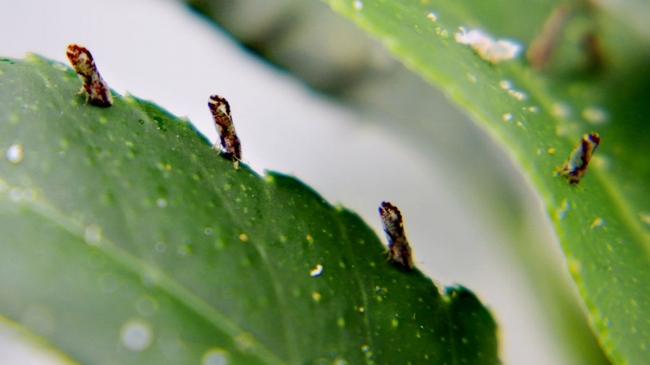
- Author: Ben Faber
Proper pruning and tree care are important in most trees, including citrus and avocado. The question of what decay fungus is happening to a tree often comes up and a recent UC publication can help answer that question
Wood Decay and Fungi in Landscape Trees by Downer and Perry
The other question of what to do about the fungus is answered, as well. Check it out.
IDENTIFICATION AND BIOLOGY OF DECAY FUNGI
Many wood decay fungi can be identified by the distinctive shape, color, and texture of the fruiting bodies they form on trees. These fruiting bodies take several forms, depending upon the fungus that produces them, but most of them fit into categories commonly referred to as mushrooms, brackets or conks. They often grow near wounds in bark, including old pruning wounds, at branch scars, in proximity to the root crown, or near surface anchor roots. Some decay fungi, such as Armillaria mellea, produce fleshy mushrooms at the base of infected trees or along their roots, often after rain in fall or winter. All mushrooms and some bracket fungi are annual (i.e., appearing and disappearing seasonally), but many conks are perennial and grow by adding a new spore-bearing layer (hymenium) each year.
Decay fungi are divided into those that attack heartwood (causing heart rots) and those that attack sapwood (causing sap rots and canker rots). Further subdivision is based on the appearance of the decayed wood (i.e., white rots, brown rots, and soft rots) or location in the tree (the decay is called a butt rot if it is at the base of the trunk). Canker rots usually appear on branches or the trunk. When a fruiting body is visible on a tree, it is usually associated with advanced decay; the extent of decay may be far above or below the location of the fruiting body. Trees with extensive sap rot may show symptoms of decline, including increased deadwood and a thinning canopy with reduced density of foliage.
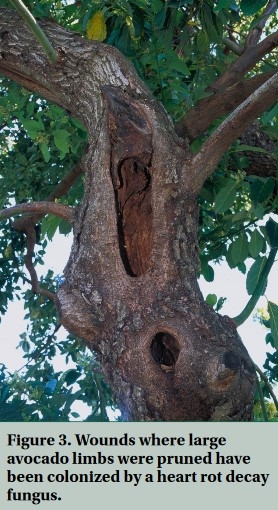
- Author: Gale Perez
Here are training videos on Weed Control Techniques. You may see a few familiar faces.
- Weed control techniques
For more training videos, visit the UC Weed Research & Information Center website and click on TRAINING VIDEOS. Enjoy and learn!
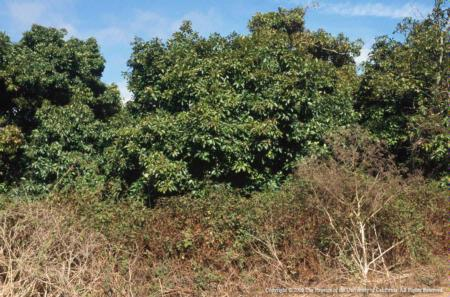
- Author: Royce Larsen
Oaks and Oak Woodlands Explained
“Natural History of the Central Coast Bioregion” (adapted from Gregory Ira's announcement: https://ucanr.edu/blogs/blogcore/postdetail.cfm?postnum=31003) The publication's lead author, Bill Tietje (Environmental Science, Policy, and Management, University of California, Berkeley), with co-authors William Preston (Geographer Emeritus, Cal Poly, San Luis Obispo) and Anne Polyakov (University of California, Berkeley; currently a Masters Student, University of Washington), created a highly readable and engaging description of the Central Coast Bioregion. “We strived to write in everyday English and create a scientifically accurate and engaging presentation.” The authors succeeded on both counts by use of plain language, common plant and animal names, and short paragraphs supported with over 65 high-quality photographs, four maps, two diagrams, ten vignettes, and 70 references for further reading.
The Central Coast Bioregion, an area between the Pacific Ocean and the San Joaquin Valley, and extending from Monterrey south to Santa Barbara, is home to wildly popular and lesser known destinations. Well known areas include the Big Sur Coast, the estuaries at Elkhorn Slough and Morro Bay, and Monterrey Bay Aquarium. Some of the hidden gems are Pinnacles National Park, Santa Barbara Botanic Garden, and the Gardens of the La Purisima Mission. Together, the authors describe the origins and present composition of the region's environments: “Across the region's 15,000 square miles, physical, and biological processes, combined with time and human actions, have resulted in a broad range of ecosystems, each harboring distinct assemblages of plants and animals.” The publication uses engaging vignettes to highlight local conservationists, regional wildlife, historical and contemporary restoration efforts, and interesting places to explore. It begins with a brief history of the region, providing context to descriptions of subsequent environmental and land-use changes, a reminder to readers that while the future of the central coast is uncertain it will be shaped by our actions. You can find the publication at:https://anrcatalog.ucanr.edu/pdf/8597.pdf
Sharing Oak Woodland Research through a Popular Website (adapted from Devii Rao, Bill Tietje,Luke Macaulay, and Judi Young) Since its creation in 1995, the University of California Oak Woodland Management website has been a valuable educational resource. Based on Google Analytics data from 2011 to 2017, the website receives an average of 45,000 users annually. It is a repository of nearly 30 years of research and outreach data on the ecology, management, and conservation of California's 8 million acres of oak woodlands.
Recent staff retirements and changes in website standards created a need for an update and redesign. To accomplish this, the University of California Cooperative Extension received a Renewable Resources Extension Act Capacity Grant that allowed us to reformat the website for mobile devices; make the website more functional and visually appealing; add some of the latest research; and promote the website to groups who have not historically used it, in particular, the ranching community.
To increase user friendliness, we developed links at the top of the home page for the three primary target audiences: homeowners, land-use planners, and ranchers. On the home page, we also highlighted five topics that receive the most hits: species identification and ecology; oak regeneration and restoration; economic and ecological values of woodland stands; threats to oak woodlands; and woodland wildlife. The new website, now called UC Oaks, went live in June of 2020.
The new flexible website design will allow us to continuously meet the needs of our clientele. With its new look and expanded reach, we hope that the website will be a one-stop-shop for everything people need to know about oak woodland conservation and management. https://oaks.cnr.berkeley.edu/
